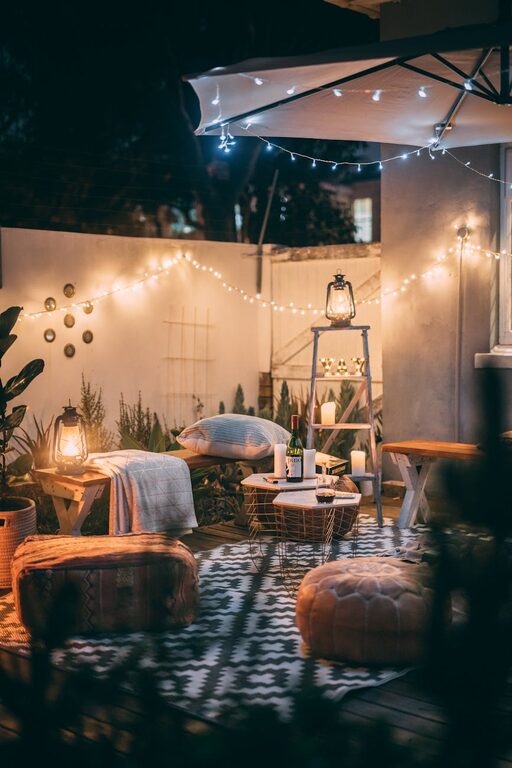Creating a comfortable and inviting atmosphere at home starts with good lighting. The right lighting can transform your living space, making it cozy, functional, and aesthetically pleasing. However, choosing the ideal lighting isn’t always easy — it requires considering various factors such as room purpose, natural light, bulb types, and fixture styles.
In this post, we’ll explore helpful tips to guide you in selecting comfortable home lighting that fits both your needs and design preferences.
Understand the Purpose of Each Room
Lighting needs vary greatly depending on a room’s function. The first step is to figure out how you use the space:
– Living Room: Often a place for relaxation, conversation, and sometimes reading or watching TV. Lighting should be flexible and layered.
– Kitchen: Requires bright, focused light on work areas for cooking and prep.
– Bedroom: Soft, warm lighting creates a calming environment for rest.
– Bathroom: Bright, even lighting is best for grooming and makeup.
– Home Office: Bright, glare-free lighting helps maintain focus and reduce eye strain.
Knowing the purpose helps you decide the style and intensity of lighting required.
Layer Your Lighting
Comfortable lighting isn’t about brightness alone; it’s about layering different types of light to suit activities and moods.
1. Ambient Lighting
This is the main general lighting for a room. Ceiling fixtures, recessed lights, or wall-mounted fixtures often provide ambient lighting.
2. Task Lighting
Task lighting focuses light where you need it most, such as under-cabinet kitchen lights, desk lamps, or reading lights beside the sofa.
3. Accent Lighting
Accent lighting highlights decorative elements like artwork, plants, or architectural features. It adds depth and interest to the room.
Layering these types gives you control and comfort over your environment.
Choose the Right Bulbs
Bulb choice greatly affects the quality of light and comfort level.
Color Temperature
Measured in Kelvins (K), color temperature impacts the mood:
– Warm Light (2700K–3000K): Cozy, yellowish light ideal for living rooms and bedrooms.
– Neutral White (3500K–4100K): Balanced light good for kitchens and bathrooms.
– Cool White (5000K+): Bright, bluish light suitable for workspaces.
Brightness
Lumens measure brightness—higher lumens mean a brighter light. For comfortable lighting, consider bulb wattage equivalents and room size.
Dimmable Bulbs
Installing dimmable bulbs and compatible switches allows you to adjust light levels, enhancing comfort throughout the day.
Consider Natural Light
Maximize the use of natural light during the day for a pleasant, energy-saving environment.
– Use sheer curtains or blinds to diffuse sunlight gently.
– Position mirrors to reflect natural light into darker areas.
– Choose lighting fixtures that complement daylight to prevent overly harsh contrasts.
Balancing artificial and natural light reduces eye strain and makes your space more appealing.
Select Fixtures that Suit Your Style and Needs
Lighting fixtures are not just functional—they are also design elements.
– Pendant lights work well over dining tables or kitchen islands.
– Floor and table lamps add warmth and provide task lighting in living rooms and bedrooms.
– Recessed lighting offers a clean, unobtrusive look for ambient light.
– Wall sconces can add layered light and style in hallways or bedrooms.
Choose fixtures that fit your décor, scale well in your rooms, and provide the right type of light.
Pay Attention to Lighting Placement
Comfortable lighting depends on proper placement so light reaches where it’s needed without glare or shadows.
– Avoid placing lights directly behind monitors or TVs to reduce glare.
– Position task lighting close to where you perform activities like reading or cooking.
– Ensure ambient lighting distributes evenly across spaces.
Testing different placements before final installation can greatly improve comfort.
Safety and Energy Efficiency
Comfort also means safe and sustainable lighting choices.
– Opt for LED bulbs—they are energy efficient, long-lasting, and produce less heat.
– Use solid, stable fixtures to prevent accidents.
– Make sure wiring and switches meet safety standards and are installed correctly.
Responsible lighting choices protect your home and reduce energy costs.
Final Thoughts
Choosing comfortable home lighting takes a thoughtful approach tailored to your rooms, activities, and personal style. By layering ambient, task, and accent lighting, picking the right bulbs, and paying attention to placement and natural light, you can create a home that feels welcoming and functional.
Experiment with different lighting setups, dimmers, and fixtures to find what feels best. Comfortable lighting not only beautifies your space but also supports your well-being every day.
—
With these tips in mind, you’re ready to light up your home in a way that looks good and feels great!



